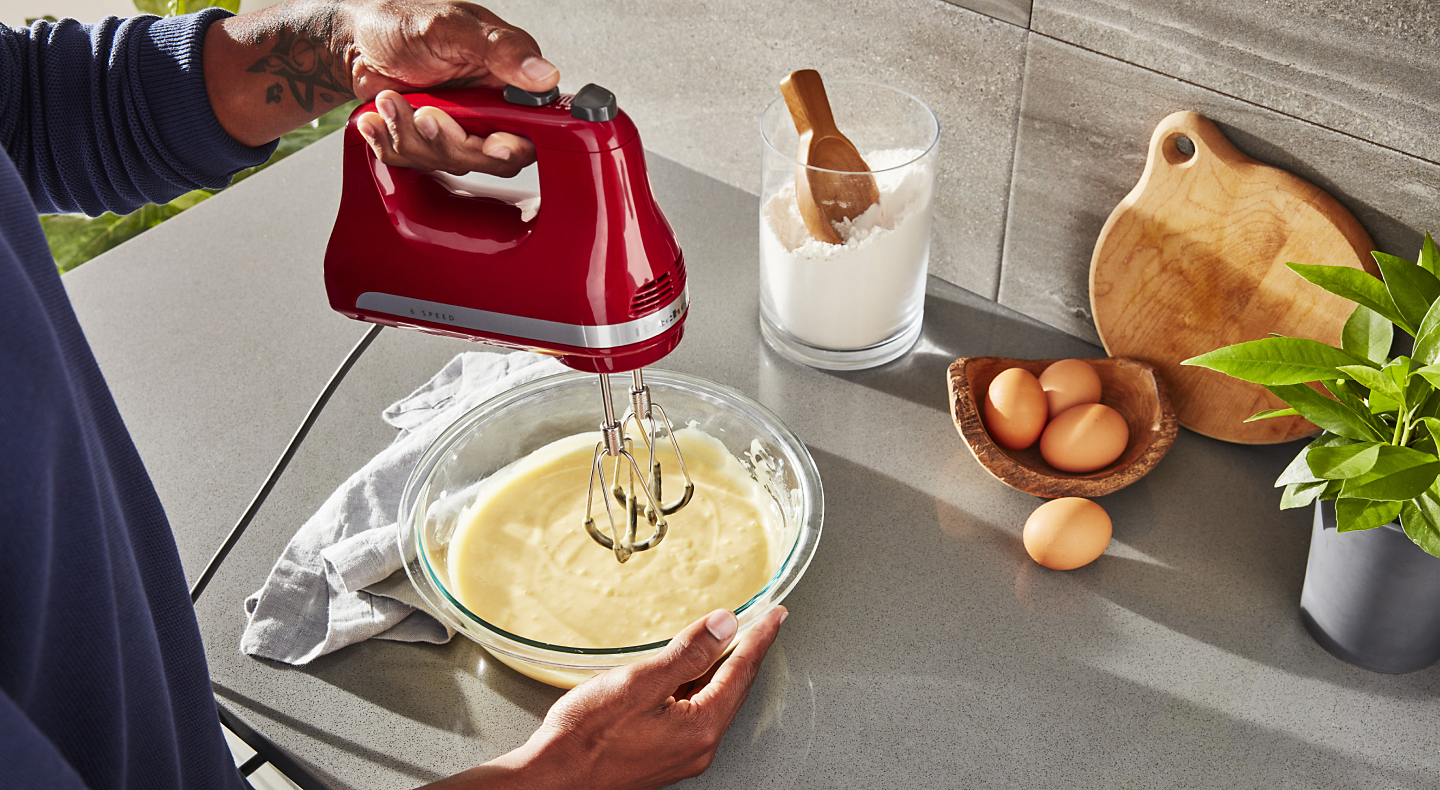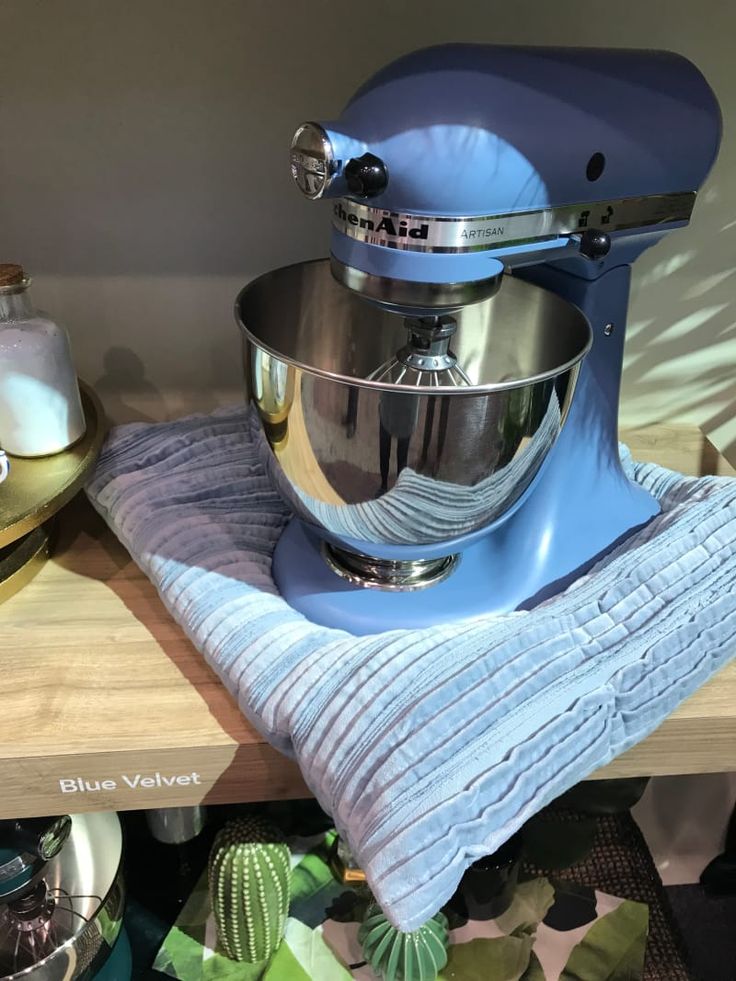Ever found yourself in a kitchen conundrum, wishing you had the raw power of a stand mixer for that heavy bread dough, but also the nimble flexibility of a hand mixer for a quick batch of whipped cream? If you’re nodding along, you’ve likely stumbled upon the very question that brings us here today: What Is A Stand Mixer With Detachable Hand Mixer? Well, you’re in for a treat. This clever kitchen gadget might just be the versatile hero your countertop has been waiting for.
The Best of Both Worlds: Unpacking the Hybrid Mixer Concept
Let’s get straight to it. A stand mixer with a detachable hand mixer, often called a “2-in-1 mixer” or a “convertible mixer,” is exactly what it sounds like. It’s a hybrid appliance designed to give you the core benefits of both a stand mixer and a hand mixer in a single, space-saving unit.
Picture this: the main body is a stand with a base, a tilting head mechanism, and a mixing bowl that often rotates. But the magic lies in the motor unit—the “head” of the mixer. With the simple push of a button, this entire motor unit detaches from the stand, instantly transforming into a fully functional, portable hand mixer. It’s the Swiss Army knife of the baking world.
“For home bakers with limited space or those just starting their journey, the 2-in-1 mixer is a game-changer. It eliminates the need to choose between two essential appliances, offering a practical and often budget-friendly solution,” notes professional baker David Carter.
This design brilliantly tackles one of the biggest challenges for home cooks: kitchen real estate. You get the hands-free convenience for longer tasks without permanently sacrificing a huge chunk of your counter space.
How Does a Stand Mixer with Detachable Hand Mixer Actually Work?
The engineering is surprisingly straightforward and user-friendly. Here’s the typical workflow:
- Stand Mixer Mode: You lock the detachable mixer head onto the stand. The beaters or dough hooks are inserted, and the bowl is placed on the base. You flick it on, and it operates just like a traditional stand mixer, mixing your ingredients while your hands are free to measure out flour or grease a pan.
- The Switch: When you need to switch to a smaller task, like whipping egg whites in a separate bowl, you simply press a release button or lever.
- Hand Mixer Mode: The motor unit pops right off the stand. Now you have a lightweight, powerful hand mixer ready to go wherever you need it. You can take it directly to the pot on the stove to finish a sauce or use it with any bowl you own.
Think of it like a convertible laptop—a fully functional laptop when you need to type a long document, but the screen detaches to become a tablet for casual browsing. It’s all about versatility.
Key Features to Consider Before You Buy
Not all convertible mixers are created equal. As a kitchen gadget enthusiast, I’ve learned that the devil is in the details. If you’re considering buying a stand mixer with detachable hand mixer, here’s what you need to keep on your radar.
Power and Wattage: The Muscle Behind the Mix
The motor is the heart of any mixer. For these 2-in-1 models, you’ll typically see power ratings from 250 to 400 watts.
- 250-300 Watts: Perfectly adequate for most everyday tasks like cake batter, cookie dough, whipping cream, and mashing potatoes.
- 350-400+ Watts: If you plan on tackling thicker, heavier doughs like bread or pizza dough, you’ll want a model with a bit more oomph. Higher wattage generally means the motor won’t struggle or overheat under pressure.
Speed Settings and the Crucial “Slow Start”
Flexibility in speed is non-negotiable. Look for models with at least 5 speed settings. This allows you to go from a slow, gentle stir for incorporating flour to a high-speed whip for creating stiff meringue peaks.
A feature I always recommend is a slow start or soft start function. This prevents the dreaded “flour cloud” that erupts when a mixer starts too aggressively. It gently ramps up to your selected speed, keeping your ingredients in the bowl and not all over your counter.
Attachments: Your Baking Toolkit
The attachments determine what your mixer can actually do. The standard trio you should expect are:
- Traditional Beaters: The workhorses for most tasks, from creaming butter and sugar to mixing cake batters.
- Dough Hooks: Essential for kneading bread, pizza, and other yeast doughs. They mimic the push-and-fold action of hand kneading.
- Whisk: A balloon-shaped whisk is fantastic for incorporating air into ingredients. Think meringues, whipped cream, and fluffy omelets.
Bowl Capacity and Material
The included bowl is a key part of the stand mixer function. Most convertible models come with a bowl ranging from 3 to 4 quarts. This is a great size for the average family, capable of handling a standard batch of cookies or a single loaf of bread. Look for stainless steel bowls—they’re durable, easy to clean, and won’t retain odors or stains.
The Big Showdown: Hybrid Mixer vs. Stand Mixer vs. Hand Mixer
So, where does this hybrid hero fit in the grand scheme of kitchen appliances? Let’s break down the key differences to help you decide which one is right for you.
| Feature | Hybrid 2-in-1 Mixer | Dedicated Stand Mixer | Dedicated Hand Mixer |
|---|---|---|---|
| Primary Use | Versatile baking and cooking for the everyday home cook. | Heavy-duty, large-batch baking (bread, dense doughs). | Quick, small-to-medium tasks (whipping, light batters). |
| Power (Typical) | 250 – 400 Watts | 325 – 600+ Watts | 150 – 250 Watts |
| Hands-Free | Yes, when used in the stand. | Yes, its primary function. | No, requires you to hold and move it. |
| Portability | Excellent, the hand mixer unit is fully portable. | Very poor, heavy and bulky. | Excellent, lightweight and easy to store. |
| Footprint | Small to medium, more compact than a dedicated stand mixer. | Large, requires significant counter or storage space. | Very small, easily fits in a drawer. |
| Cost | $-$$ | $$$-$$$$ | $ |
| Best For | Small kitchens, new bakers, budget-conscious users. | Serious bakers, large families, those who bake frequently. | Occasional bakers, cooks needing quick mixing power. |
Is a 2-in-1 Mixer Right for You? The Honest Pros and Cons
I’ve spent years putting these gadgets through their paces. Here’s my honest take on who should buy a stand mixer with detachable hand mixer, and who might be better off with a dedicated appliance.
Who Should Buy a Convertible Mixer?
- The Space-Conscious Cook: If you live in an apartment or have a small kitchen, this is a no-brainer. You get two appliances in one footprint.
- The Budding Baker: If you’re just starting your baking adventure, this is a fantastic entry point. It lets you experiment with both hands-free and handheld mixing without a huge investment.
- The Practical All-Rounder: You don’t just bake. You also make mashed potatoes, dips, and sauces. The ability to pop the mixer off the stand and take it to the stove is incredibly useful.
- The Budget-Savvy Buyer: A good 2-in-1 mixer is almost always more affordable than buying a separate stand mixer and hand mixer of comparable quality.
Who Might Want to Skip It?
- The Artisan Bread Maker: If your primary goal is to knead multiple loaves of dense, heavy bread dough every week, the motor on a hybrid model might not have the long-term durability of a high-end, dedicated stand mixer like a KitchenAid.
- The High-Volume Baker: If you’re regularly making double or triple batches for bake sales or large family gatherings, you’ll likely find the bowl capacity and motor power of a convertible mixer to be limiting.
- The Minimalist: If you only ever whip up a quick batch of brownies, a simple, inexpensive hand mixer might be all you truly need.
Pro Tips for Getting the Most Out of Your Mixer
Once you have your new gadget, a few simple tricks can elevate your experience from good to great.
- Start Low, Go Slow: Always begin mixing on the lowest speed to combine ingredients before ramping up. This is especially true for dry ingredients like flour.
- Scrape Down the Bowl: Even with a rotating bowl, ingredients can cling to the sides. Pause the mixer once or twice during a long mix to scrape down the sides and bottom of the bowl with a spatula. This ensures everything is evenly incorporated.
- Chill Your Beaters: When making whipped cream, pop your beaters (and the bowl, if possible) in the freezer for 15 minutes beforehand. The cold helps the cream whip up faster and hold its shape better.
- Don’t Overwork Dough: When using dough hooks, mix just until the dough comes together and pulls away from the sides of the bowl. Over-kneading can result in tough bread.
Cleaning and Maintenance: Keeping Your Hero Happy
Proper care is key to a long and happy relationship with your mixer. Luckily, it’s easy:
- Unplug First! This is rule number one. Always unplug the unit before cleaning or changing attachments.
- Attachments and Bowl: Most stainless steel bowls and attachments are dishwasher safe (always check the manufacturer’s manual). If washing by hand, use warm, soapy water.
- The Mixer Body: Never submerge the motor unit in water. Simply wipe it down with a damp cloth. Use a toothpick or small brush to gently clear out any gunk from the ventilation slots.
- Storage: Store it in a clean, dry place. If you don’t use the stand often, you can store it away and just keep the hand mixer unit accessible in a drawer.
Frequently Asked Questions
Can a stand mixer with detachable hand mixer knead bread dough?
Yes, most models can handle a standard single-loaf recipe. However, for very dense, heavy doughs or frequent bread making, a more powerful, dedicated stand mixer is a better long-term investment.
Are these mixers as powerful as a real stand mixer?
Generally, no. A high-end dedicated stand mixer will have a more powerful motor and a more robust gear system designed for heavy-duty, prolonged use. A 2-in-1 mixer is a master of versatility, not a heavyweight champion.
What are some good brands to look for?
Brands like Hamilton Beach, Sunbeam, and Cuisinart are well-known for producing reliable and popular 2-in-1 models that offer great value for the price.
Is the rotating bowl feature important?
It can be very helpful! A bowl that rotates automatically as the beaters spin ensures a more thorough and even mix, reducing the need for you to constantly scrape down the sides.
Can I use my own bowls with the detachable hand mixer part?
Absolutely! That’s one of its biggest advantages. Once you detach the hand mixer, you can use it with any mixing bowl you have in your kitchen, big or small.
The Final Whisk
So, what is a stand mixer with detachable hand mixer? It’s a clever, versatile, and incredibly practical solution for the modern home cook. It elegantly bridges the gap between power and portability, offering a fantastic balance of features for anyone who loves to bake but is constrained by space, budget, or both. While it may not replace the professional-grade stand mixer for the most ardent bakers, it provides more than enough power and convenience to elevate the everyday kitchen experience for the vast majority of us. If you’re looking for one appliance that can do almost everything, this just might be your perfect match.